Natural Health Solutions
- The Well (Home Page)
- Water Cures Blog
- How To Do Water Cures
- What is Water Cures?
- Electrolytes & Salt
- Drinking Water
- Hire a Hydration Coach
- Acid Reflux
- Addiction Treatment
- Allergy Relief
- Blood
- Bones and Joints
- BP / Heart / Vascular
- Brain / Head / Mental
- Cancer
- Chronic Fatigue
- Cramps No More
- Dehydration
- Edema
- Fibromyalgia
- HIV / AIDS
- Immune System
- Lungs / Respiratory / Cough
- Lupus
- Lyme Disease
- Multiple Sclerosis
- Pain
- Skin Care
- Urinary Tract Infection
- Womens Health
- Water & Weight Loss
- Student Grades
- Survivalist Health Care
- Pet Water Cures
- Hydration Coach
- Testimonials
- My Water Cures
- FAQ
- In The News
- Volunteer
- About / Contact
- Red Light Therapy
- Live Blood Microscopy
Sodium vs Salt: The Difference
Is Salt the Same as Sodium?
Sodium vs Salt, do you know the difference? Here we will examine the various measurements. Note: the science and real life use of salt often do not add up. One reason is because weight and volume are not the same. Another is that size (large grains and small) makes a difference in measuring the amount of sodium.
As a general rule, 1 teaspoon of table salt has between 2000 and 2300 mg of sodium. Salt is not sodium, rather, it is a combination of sodium chloride.
Also, not all salt has the same sodium content, in-spite of what you read on medical sites as the university research below will show. One deep sea salt even has 33% less sodium chloride than table salt.
The Sodium vs Salt Challenge
Some topics we will be considering are listed here below. Click to zip to the topic or just scroll down.
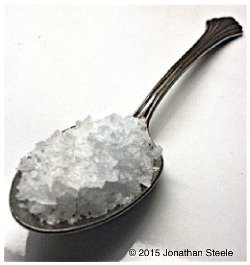
Salt Weight: Teaspoon to Grams
Sodium Table Salt vs Celtic Salt
Salt Weight in Grams / Milligrams Per Teaspoon
Salt weight in milligrams per teaspoon is not an exact science. This is because the size of the salt varies. Larger crystals will not pack as tight and thus the weight per teaspoon could vary. An additional confounding factor, the amount of sodium in the salt can vary, although not usually more than about 10%.
You may read on medical sites and other places that table salt and sea salt have the same sodium content. While in one way, this could be true (see chart below) it is misleading. First, all salt comes from only 2 places, mines or from the ocean. Generally speaking, if your salt is white or gray, it is sea salt. If it is pink or brown, it is mined salt. Kind of a no brainier, table salt does not come from the table.
The Snow White Exception: Some artisan salts, Portuguese sea salts and Celtic Makai Deep Sea Salt are white like snow. They have not been processed. The Makai has more minerals and 33% less sodium than table salt. It is also one of the most expensive. Not all websites have this updated understanding.
Because of its various sizes, unless it is crushed to a fine powder, the measurements you use in real life will have no relationship to the measurement you will read from scientists who measure the amount of sodium and chloride in the salt.
One intrepid scientist measured and came up with the following measurements. These are averages of the amount of salt per teaspoon.
Coarse Kosher salt is 5.5 grams per teaspoon. Note, the coarse does not pack as tightly because it is larger.
Common table salt is 6.15 grams per teaspoon.
Back to TopHow Much Sodium vs Salt in a Teaspoon
How much sodium per teaspoon in grams?
How much sodium per teaspoon in milligrams?
Not all salts have the same sodium content. Unprocessed salts not only have less salt content, they have additional minerals that act as buffers and make the taste much more dynamic than table salt. Comparing table salt with unprocessed sea salt and artisans salt is the difference between a HUGO (an low value car from a defunct automaker) and a Mercedes or at the high end, Rolls Royce.
First consider the percentage of sodium. Here is a university research on the topic.
Teaspoon to Grams and Milligrams
Salt weight in Grams per Teaspoon: start with the math...
Coarse Kosher salt: 5.5 grams per teaspoon The coarse does not pack as tightly.
Common table salt: 6.15 grams per teaspoon.
Average of 4.93 - 5ml in a teaspoon (depending upon density) which means it would be about 4930 - 5000mg of salt in a teaspoon.
Sodium chloride or table salt is approximately 40% sodium (rounded up).
There are a number of tables with various values. We have taken to the values published by Colorado State University Extension Website.
Sodium vs Salt Conversions
1/4 teaspoon of salt = 500 milligrams of sodium
1/2 teaspoon of salt = 1,000 milligrams of sodium
3/4 teaspoon of salt = 1,500 milligrams of sodium
1 teaspoon of salt = 2,000 milligrams of sodium
Read More about this at Food Watch.
Back to TopSodium Table Salt vs Celtic Salt
 |
Note: Makai has 33 percent less. It did not exist and thus was not included at the time of this study.
Back to TopHow Much Sodium Is in Our Salt?
Salt sodium conversion: Sodium Chloride is essential to our health, both physically and mentally. They are involved in numerous chemical reactions in our body. Having too much or not enough can cause us to be ill.
How much do we need? How much are we getting?
There is a lot of confusion on the sodium vs salt measurements. Many sites and even professionals will repeat numbers but not have a full understanding of what they are saying. How much salt you eat is not the same amount of sodium. Remember, salt contains sodium and chloride. If you take unprocessed sea salt, there could be even less sodium than in table salt.
There is not a simple answer to how much sodium is in a spoon of salt. This is because sodium and chlorine do not weigh the same. The measurement of these is in moles.
While salt is 45 percent sodium that does not mean that it 45% in weight. Weight and quantity are two different measurements.
Lets assume we want to know what the sodium content of 3 grams of salt would be.
Sodium or the chemical name of Na has a weight of 22.99 grams/mole
Chloride or the chemical name of Cl has a weight of 35.45 grams/mole
To make this easier, lets round the above numbers to the next highest number.
1 mole of NaCl = 23 + 35.5 g = 58.5 grams per mole
This means that Sodium is 23/58.5 the weight of salt.
The formula becomes 23/58 x 100% = 39.3% of salt is sodium
To figure how much sodium is in 3 grams of salt take the 39.3% x 3 grams = 1.179 grams or round it off and move the decimal thee places to the right. So 1.179 becomes 1178 milligrams. Round it off and you have about 1200 mg of sodium in 3 grams of salt or 3,000 mg of salt.
So three grams or 3,000 mg of salt has 1200 mg of sodium in it.
Another way to use this formula, recognizing that 39.3% of salt is sodium, simply multiply 0.393 times the mass of the salt and you will get the mass of the sodium.
Salt weight in grams per teaspoon: 5.5 grams = 2.165 or round off to 2200 grams of sodium.
So, 3 grams X 0.393 = 1.179 grams or round it off and you get 1200 mg of sodium.
Using this formula, 1 tsp of table salt has 2100 mg of sodium within. Between our measurement and the literature, the number becomes 2100 mg to 2300 mg of sodium for each teaspoons of salt, depending on the kind of salt used.
This is in line with the package label of a package of salt that lists the sodium content of generic table salt as 590 mg per 1.5 grams (1/4 tsp). That ends up being 2360 mg per tsp.
Celtic Sea Salt™ Sodium ContentLets do the same with Celtic Sea Salt™. Remember, while there are different kinds, the coarse is only 87% sodium chloride. Thus, 3 grams only has 2.61 grams of sodium chloride. Multiply that by the percentage of sodium (33.8%) and you get 0.8821 grams or 882 mg of sodium. Lets round it up to 900 mg of sodium in 3 grams of Celtic Sea Salt. The package of light grey lists 480 mg of sodium per 1.5 grams.
Per the label, that would be 1920 per teaspoon. That means it is just over 18% less sodium.
If the average person in the US eats 3 teaspoons of salt, by switching to unprocessed sea salt, they would be cutting about 1320 mg of sodium from their diet. As to the argument that people think they can eat more salt because it has less sodium, well, they would have to eat about 3/4 more teaspoon to even break even.
So the question becomes, when some doctor says all salts are the same, what are they basing that on. Information from a web search or on science and math? Lets round it up to 1000. We are still almost 20% less sodium than in table salt.
Lets assume there are varying amounts of sodium since it is naturally processed. While that could allow for an increase in the sodium count, the fact that it is large crystals decreases the amount of sodium.
If All Salts is the Same the people will not eat more. We like what we like. We don't eat more salt because we can. We only add it to foods to the point we like it.
What About Authority Websites
The Mayo Clinic Website says,"Sea salt and table salt have the same basic nutritional value, despite the fact that sea salt is often promoted as being healthier. Sea salt and table salt contain comparable amounts of sodium by weight." This could be true if you used processed sea salt.
Again, unprocessed sea salt is about 20% less sodium of table salt.
So, when some doctor says that all salts are equal, ask, where is the math? What are you basing this on?
Note: If our math is in error, please let us know. Please share how it is wrong and how it should be corrected.
Multiply Salt in grams x 39.3 to get the amount of sodium in grams in salt.
Multiply Salt in mg x 0.393 to get the amount of sodium in ml in your salt.
Sodium or the chemical name of Na has a weight of 22.99grams/mole Chloride or the chemical name of Cl has a weight of 35.45 grams/mole
To make this easier, lets round the above numbers to the next highest number.
1 mole of NaCl = 23 + 35.5 g = 58.5 grams per mole
This means that Sodium is 23/58.5 the weight of salt.
The formula becomes 23/58 x 100% = 39.3% of salt is sodium in grams.
To figure how much sodium is in 3 grams of salt take the 39.3% x 3 grams = 1.179 grams or round it off and move the decimal thee places to the right. So 1.179 g becomes 1178 grams. Round it off and you have about 1200 mg of sodium in 3 grams of salt or 3,000 mg of salt.
So three grams or 3,000 mg of salt has 1200 mg of sodium in it.
Another way to use this formula, recognizing that 39.3% of salt is sodium, simply multiply 0.393 times the mass of the salt and you will get the mass of the sodium.
In the science of Sodium vs Salt, remember...
Coarse Kosher salt: 5.5 grams per teaspoon The coarse does not pack as tightly.
Common table salt: 6.15 grams per teaspoon.
Salt of the Earth: Land and Sea
The salt you use for your food, whether it is table, sea salt or mined salt (salt only comes from two places, the sea or from mines) is made of sodium and chloride. Unprocessed salt has additional minerals.
When we read about sodium levels, often the sodium is interchanged with the word salt. In reality, they are two different things with different amounts. Even the more scientific sites get the numbers wrong because of the mistaken assumption that sodium is the same as salt.
Sodium Chloride, The Crystal
Table salt, mined salt and unprocessed sea salt all contain sodium and chloride. In the chemical sciences, salt is any ionic compound that is formed through the reaction of an acid and base. Usually, unless speaking chemistry or pharmaceutical lingo, when you hear the word salt, it is referring to the food additive that is in the shaker on your table.
So What is Sodium vs Salt?
Sodium, a soft metal and when combined with chloride, it becomes sodium chloride or NaCl. NaCL is essential for sustaining our life. Sodium by itself, is combustable when exposed to water, thus we cannot eat pure sodium. However, when we ingest sodium chloride our body separate the two and they have unique uses by our body.
Back to TopSodium Chloride and Your Body
Sodium chloride is essential for health and for life. Sodium plays a role in nerve transmission. Sodium helps maintain the hydration balance throughout our body and can be found in or outside of every cell.
Inside our body we have two oceans of water. One inside and one outside our cells. Sodium helps maintain the balance between the two oceans at the cellular level. Potassium resides primarily inside the cells and sodium is in the water outside. Sodium is the regulator of the fluid outside of the cells. It is responsible for pumping fluid into the cells while the potassium in the water inside is replaced and carries by-products out.
Sodium plays a role in the transport of water throughout the body and is maintained by hydration.
Sodium plays a role in muscle contractions. Sodium can help prevent leg cramps.Sodium also plays a role in the fluid levels of our two circulatory systems. It is involved in our blood pressure.
Too Much Sodium (hypernatremia): is a condition of too much salt in relation to the water in the liquid around the blood. There are numerous reasons this can happen including kidney disease, not drinking enough water and loosing too much water because of diarrhea and/or vomiting.
Too Little Sodium (hyponatremia): happens when there is more water and not enough salt. This can happen in liver and kidney disease, congestive heart failure, in burn victims, and a number of other conditions.
Bottom Line: Too much or too little sodium can cause cell malfunction.
Back to TopChloride, when separated from the sodium inside our body is used by our body to make hydrochloric acid.
Chloride, like sodium, is found in the fluid outside of cells as well as in the blood. It might be interesting to note that sea water chloride is in a similar concentration of the chloride that is found in the human body. Chloride like sodium plays a role in helping the body maintain a normal balance of fluids.
The ratio of chloride to other electrolytes is regulated by the body. Having too much or too little chloride in the body can cause sever health problems or even death.
Too much chloride (hyperchloremia): may happen with diarrhea, certain kinds of kidney diseases, and in some cases can be caused by overactivity of the parathyroid glands.
Too little chloride (hypochloremia): We loose chloride in our urine, sweat, and stomach secretions. If we experience heavy sweating, vomiting, and adrenal gland and kidney disease, we can loose more chloride than normal.
Back to TopRecent Articles
-
Dark Screen Microscopy: What it is, does and what it can tell you.
Jul 07, 19 05:23 PM
Dark Screen Microscopy allows for a BioNutritional Auditi to look at your blood in its whole, live state -
About Water Cures and how water can help improve your health and life
Oct 25, 18 09:38 PM
About water cures: information on the Water Cures Protocol, Dr. Batmanghelidj and the founder of this site, Bob Butts.. -
Water Cures Testimonials
Apr 16, 18 09:26 PM
Water cures testimonials of those who improved their health using the water cures protocol.
October 22, 2018...
Robert Butts, founder of WaterCures.org passed away at the age of 83. He will be missed.
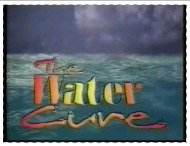
 |
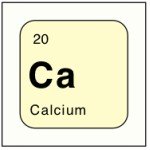 |
Warning: Research shows calcium supplements may be harmful to your health.
| Fixing Blood Disorders
Posted December 2016 |
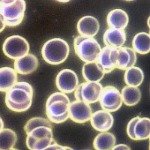 |
© 2016 Jonathan Steele
It is amazing how so many things that are new to us were common knowledge in the past. One basic practice of the Water Cures protocol is to drink at least 30-45 minutes before and 2 1/2 hours after a meal. This is not a new thought however. Notice what a magazine from 1925 had to say...
"Drink plenty of water two hours after each meal; drink none just before eating; and a small quantity if any at meal time. Do not take a bath until two hours after eating a meal, nor closer than one hour before eating. Drink a full glass of water both before and after the bath." (Golden Age, Sept. 9, 1925, pp. 784-785)
 |
New in 2016
Cancer 1, Natural Cures 0
The War...is against...
Cancer Natural Cures
---------------------
| Hand Joint Pain: How Can I Make It Go Away? |
 |
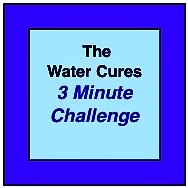 |
to try a no cost, scientifically proven way of improving your well being?
Click Here to try the 3 Minute Challenge
Find them right here!
 Shoulder Joint Pain Relief Shoulder Joint Pain Relief |
 |
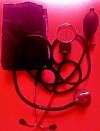 |
What Your Doctor's Not Telling You!
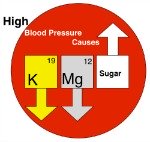 High Blood Pressure Causes High Blood Pressure Causes |
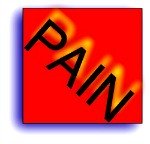 |
 |
We started expanding on the causes...
The weirdest...chimney sweep cancer. You won't believe where it strikes.
Our theory on...
Healthy Hydration for Athletics & the reason for hydration guideline failures in the past.
We speak to organizations small and large, private and corporate.
Our scientifically proven training works to improve performance and decrease lost days due to illness.
We are currently speaking to hospitals to train staff in ways to decrease the readmission rates in several disease processes that pose high risk of <30 day readmission.
We can cut the rates by up to 70%. Ask us how.
Nurse Jon for more information on hydrating to improve performance.
Here is the Science
We are not promoting increased salt intake. We are suggesting taking salt in amounts appropriate to your bodies needs, based on water needs. Our needs are not one size fits all.
Note: Do you have CHF or Kidney Disease? Then.....
THIS IS NOT FOR YOU.
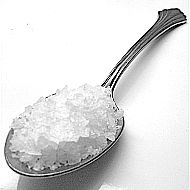 |
Read This Study
And Decide for Yourself
 |
For Most of Us, No!
According to a JAMA study.
A Review of the above JAMA Article
Study: Salt May Not Be All Bad?
Listen to your body. Do not use this if you are under a doctors care. Do not stop taking medications without consulting your doctor. If you are on medications, consult your doctor if you start the Water Cures Protocol as it may change your needs.
 |
Click Here to Discover How
 |
Click Here
Sign Up for your biweekly newsletter.
 |
 |
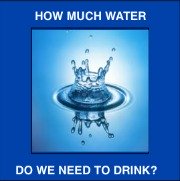 |
If you are looking for an affordable alternative natural health care for depression, consider the Water Cures protocol.
Like What You're Learning? Please share your likes on Facebook
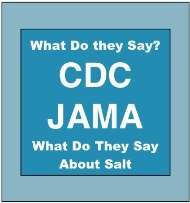 |
 |
 |
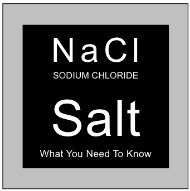 |
Hi, my name is Sharon. The webmaster of this site is my nurse, my personal water coach and my husband.
As this site was first being built, I had a headache and as usual took an Ibuprofen. Impatient for it to start working, I decided to try the Water Cures. I took a pinch of salt and a glass of water. Then I took a second pinch of salt and another glass of water. My headache was gone in less than 5 minutes.
From my personal experience, it usually takes 30 to 45 minutes for Ibuprofen to work. Some have found it takes ibuprofen 24 minutes to start working.
Yet on the Water Cures protocol, my headache was gone in 5 minutes.
Its simple: give your body what it needs and your body will give you what you need, the ability to feel great.
Water Cures was the solution for the elimination of my headache. It is what I will use from now on.
Why not give it a try yourself.
